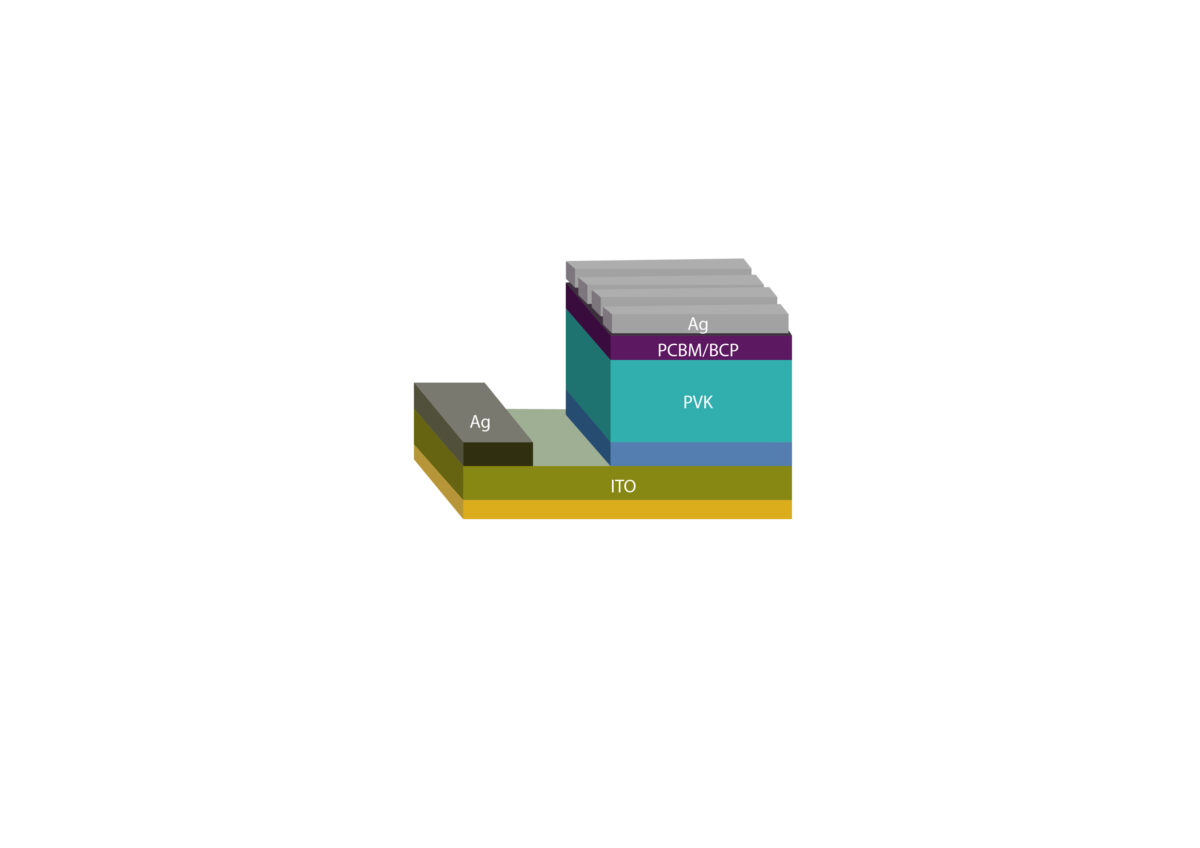A group of researchers at the Universidad de los Andes en Colombia have developed for the first time an inverted perovskite solar cell with a hole transport layer (HTL) based on nickel oxide (NiOx) layers doped with indium (In).
Inverted perovskite cells have a device structure known as “p-i-n”, in which hole-selective contact p is at the bottom of intrinsic perovskite layer i with electron transport layer n at the top. Conventional halide perovskite cells have the same structure but reversed – an “n-i-p” layout. In the n-i-p architecture, the solar cell is illuminated through the electron-transport layer (ETL) side; in the p-i-n structure, it is illuminated through the hole‐transport layer (HTL) surface.
The scientists explained that NiOx has an energy gap of over 3.5 eV, exceptional chemical stability, durability, low toxicity, and cost-effective processing. “In the case of NiOx-based inverted perovskite solar cells, the doping approach has indeed paved the way for HTL optimization, frequently through observable improvements also at the interface level and in the perovskite layer,” they added.
The team built the NiOxIn HTL via a one-step electrochemical deposition (ECD) process, which it said offers low processing temperature, fine control of thickness, adhesion and layer structure, as well as low generation of chemical waste.
The cell was fabricated with a substrate made of indium tin oxide (ITO), the NiOxIn HTL, a perovskite absorber, an electron transport layer based on phenyl-C61-butyric acid methyl ester (PCBM), a bathocuproine (BCP) buffer layer, and a silver (Ag) metal contact.
“Approximate thickness of each layer within the solar cell was 28 nm for the NiOxIn layers, 430 nm for the perovskite layer, 30 nm for the PCBM layer, and 125 nm for the silver layer,” the group explained.
The champion cell built with the proposed architecture achieved a power conversion efficiency of 20.06%, an open-circuit voltage of 1.10 V, a short-circuit current density of 23.40 mA cm−2, and a fill factor of 78.10%.
Popular content
Through a series of maximum power point tracking (MPPT) tests, the researchers also found that the cell was able to maintain its performance under real operating conditions for more than 3,000 s.
“By monitoring the cell performance for 46 days, all the devices were found to be stable and no effect of indium doping was observed,” they asserted. “SEM and XRD tests of the perovskite layer indicated that the In doping of NiOx has a remarkable effect by increasing the grain and crystallite size of the absorber.”
The novel solar cell design was presented in the paper “Enhanced inverted perovskite solar cells via indium doped nickel oxide as hole transport layer,” which was recently published in Solar Energy. “The results show for the first time that indium doping of NiOx is a novel and efficient option to improve the photovoltaic performance of inverted perovskite solar cells,” the academics concluded.
This content is protected by copyright and may not be reused. If you want to cooperate with us and would like to reuse some of our content, please contact: editors@pv-magazine.com.




By submitting this form you agree to pv magazine using your data for the purposes of publishing your comment.
Your personal data will only be disclosed or otherwise transmitted to third parties for the purposes of spam filtering or if this is necessary for technical maintenance of the website. Any other transfer to third parties will not take place unless this is justified on the basis of applicable data protection regulations or if pv magazine is legally obliged to do so.
You may revoke this consent at any time with effect for the future, in which case your personal data will be deleted immediately. Otherwise, your data will be deleted if pv magazine has processed your request or the purpose of data storage is fulfilled.
Further information on data privacy can be found in our Data Protection Policy.